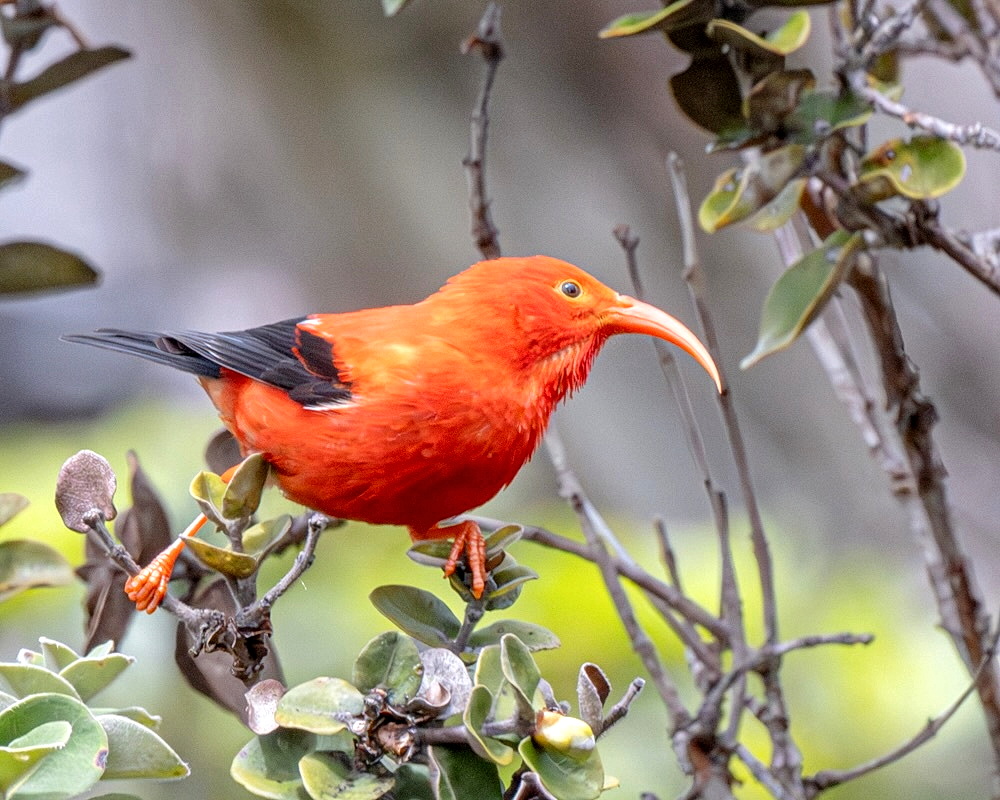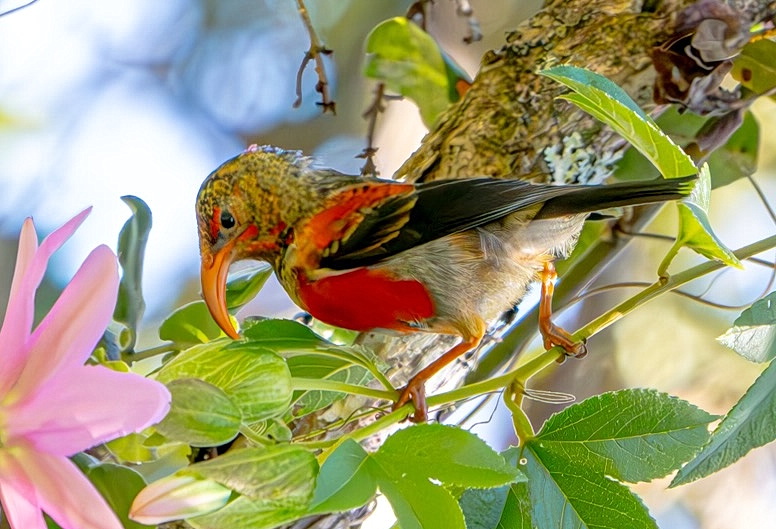
Celebrating the Poster Bird of Hawaiʻi’s Honeycreepers
/ Bird News, General Updates / By
Susan Scott
Bird Droppings: 10 things we want to share about ʻiʻiwi, Hawaiʻi’s Scarlet Honeycreeper
- With its bright red feathers and long curved bill, the ʻiʻiwi has become the poster bird for Hawaiʻi’s endemic honeycreepers.
- The ʻiʻiwi’s bill is perfect for drinking nectar from ‘ōhi‘a and other flowers. The busy birds stop at each flower for only a few seconds, gathering nectar with their brush-tipped tubular tongue. The birds also eat insects.
- In ancient Hawaiʻi, feather capes, known as ‘ahu‘ula, were a symbol of power and prestige among aliʻi (high ranking chiefs.) Some capes contained hundreds of thousands of ʻiʻiwi feathers.
- European contact brought mosquitoes and avian malaria, a disease that made Hawaiʻi’s lower elevations lethal for ʻiʻiwi and Hawaiʻi’s other honeycreepers.
- ‘I‘iwi were once common on all the Main Hawaiian Islands, but because the birds are susceptible to avian malaria, they now thrive only at high elevations above the range of mosquitoes.
- You can see ʻiʻiwi in the mountains of Kauaʻi, Maui, and Hawaiʻi Island. Mountains on Oʻahu and Molokaʻi aren’t cold enough to deter mosquitoes.
- ʻIʻiwi sometimes leave their home ranges to follow flower blooms. This takes them to lower elevations, where their risk of exposure to avian malaria increases.
- Birds, Not Mosquitoes is a multi-agency partnership that uses naturally occurring bacteria as mosquito birth control to protect Hawaiʻi’s honeycreepers from extinction.
- This multi-phase mosquito-control project has started on Maui and Kauaʻi and will eventually expand statewide.
- Because young ʻiʻiwi have ivory-colored bills, and golden feathers with spots, immature birds were once mistaken for a different species.
Image above: ʻiʻiwi by Mike Carion. Below: juvenile ʻiʻiwi by Mike Carion.

